Illustrations by Steffie Padmos for The Correspondent
I (Thomas) write about Dutch agriculture, a topic that isn’t confined by the Dutch borders. The European way of agriculture has spread all over the world. It has brought us mountains of food but also marginalised thousands of agricultural cultures and destroyed rich soils. Now that the climate is derailing, the power of other methods is burgeoning and agricultural cultures are rising from the ashes. Cultures that prevent desertification and pollution, promote biodiversity and human pride – by working with nature rather than against it.
No one in the world can tell this sad, urgent and hopeful story better than the author of 1491 and The Wizard and the Prophet – two recent landmarks in global thinking about agriculture. We are proud to present to you: Charles C Mann.
In this piece, commissioned by Flevo Campus, he shares four examples of ancient solutions to urgent problems. Chestnuts with the yield of a wheat field, digging sticks tapping ploughs, corn plants as living beanstalks, and termites as the worms of the desert. Over to Mann, and his journey with the farmers who are going to save us.
It’s a classic October day in the northeastern United States – sky as blue as heaven, maples blazing in the hills, a whiff of frost in the air. Wrapped up against the autumn wind, masked up against the coronavirus, a dozen teenaged boys and girls cut through a field of late-season maize. Gossiping among themselves, they snap off the ears, drop them into plastic sacks, and empty the sacks into a plastic tub. The tub is attached by ropes to a small tractor driven by an older boy. When the bin is full, he drives up a dirt track to a barn, the bin bouncing merrily behind, maize ears flying out. Laughing kids run after the tractor, tossing the ears back into the bin.
The harvest crew is made up of students from the Akwesasne Freedom School, run by and for Kanienʼkehá꞉ka (the Mohawk nation, in English), an indigenous society on the St Lawrence River, at the US-Canada border. Kanienʼkehá꞉ka is one of the six societies that make up the Haudenosaunee (Iroquois confederation), which has been stubbornly resisting foreign incursions since Henry Hudson sailed to New York for the Vereenigde Oostindische Compagnie in 1609. The students were working on a Kanienʼkehá꞉ka farm. The maize was a traditional Haudenosaunee variety called Iroquois shortnose.
“This is food for us,” said Kanatakeniate (Tom Cook), the elder who had taken me to the site. Unable to resist temptation, he had walked into the field and started pulling out maize. “It’s food that means home – I can’t explain it any better than that. It’s food that means we are in charge of our own lives.”
New life for traditional agriculture
A long-time native activist, Kanatakeniate had helped launch the farm, then mostly bare land, in 2015. The project had begun small, with Freedom School students raising chickens. Now they were harvesting more than five acres of maize. And they were just one of a hundred or more new indigenous farms in Haudenosaunee territory – and hundreds more across North America.
All of these farms are part of a growing drive to relaunch indigenous agriculture – not only in North America, but in places like Amazonia, Australia, and west Africa, too. The “food sovereignty” movement sees ancestral foods as essential to culture. Returning to traditional diets, Kanatakeniate told me, is essential to restoring indigenous peoples’ health, which has been ruined by “commods”: the cheap, government-provided commodity crops that have led to catastrophic levels of obesity and diabetes.
Conventional agriculture focuses on extracting the maximum number of calories from the minimum amount of land
If the food-sovereignty movement reaches its goals, it will affect the lives of the five million plus indigenous people in the Americas. But the increased attention to indigenous agriculture may have its greatest impact in a completely different arena: feeding tomorrow’s cities in a time of accelerating climate change.
Conventional agriculture focuses on extracting the maximum number of calories from the minimum amount of land. For the most part, this has meant growing concentrated monocultures of annual crops, especially cereals like wheat and rice, with heavy doses of industrial fertiliser and irrigation water. In many ways, this system has been spectacularly successful – global levels of malnourishment have fallen steadily for 50 years. Incredibly, this progress occurred even as the world’s population more than doubled and hundreds of millions of farmers left the countryside to live in cities.
But now this system is facing unprecedented ecological tests. Paradoxically, climate change is expected to give northern Europe both more intense storms and more intense droughts, each potentially devastating to harvests. (In 2018, for example, the Netherlands was hit by record drought and the worst hurricane in years.) At the same time, the environmental costs of conventional agriculture have led to pressure on farmers to control erosion, cut back on fertilisers, and reduce their use of pesticides and herbicides. The result is that farmers must stop using many of the tools of conventional agriculture at the same time that one of its preconditions – stable, predictable weather patterns – is vanishing.
Ancient agriculture can transform the modern world
At first glance, the notion that ancient forms of agriculture could help with this dilemma seems absurd. Iroquois shortnose maize, for instance, has such small ears that it is guaranteed to yield less per hectare than modern varieties. And its irregular growth – most plants are short, but some are tall, and the ears are not in uniform locations on the plant – means that it must be harvested by hand, a labour-intensive process.
But that misses the principles of the Kanienʼkehá꞉ka agricultural system. Their homeland has a notoriously unpredictable climate, with frequent late spring snowfalls, early fall cold snaps, and sudden droughts and downpours. In the Kanienʼkehá꞉ka system, shortnose maize is a backup. Its small ears mature so rapidly that it can produce a crop in the brief period between an exceptionally late snowfall and an exceptionally early frost.
And because the plant has a short stalk, it needs less water than conventional maize, a boon in drought years. It is the kind of crop farmers grow when they both assume unstable weather will cause crop failures and need to minimise the use of water or chemical inputs – assumptions from the past that have striking resonance for the future.
Another way to put it is that American indigenous agriculture transformed European farming 400 years ago, when potatoes, tomatoes, maize, and chilis arrived from the Americas. Now it may happen again.
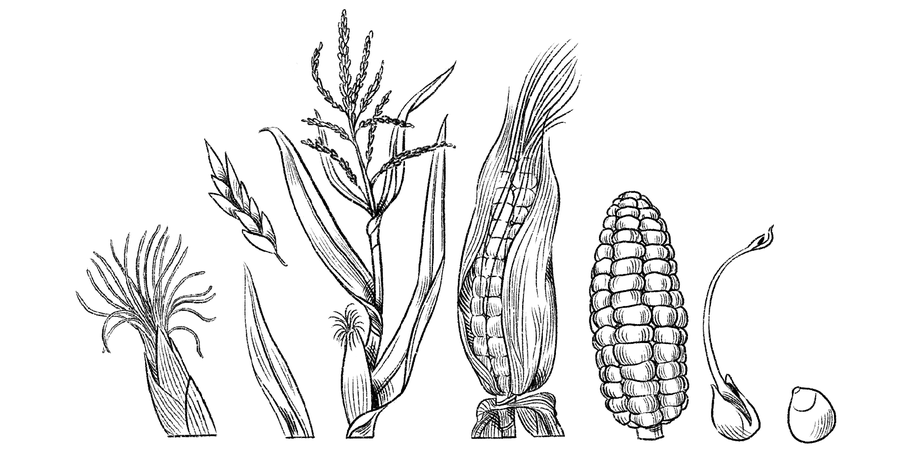
In June of 1964 the pioneering agricultural researcher Jack Harlan travelled to southern Turkey to find the roots of modern agriculture. Walking across the slopes of the volcano Karacadağ, he discovered “vast stands of wild wheat” – the ancestor varieties to the bread and noodle wheats grown today. Harlan “walked through the field with a paper sack in one hand and stripped the ripe seed with the other”. Despite this “obviously inefficient” method, he was able to take “more than two pounds of clean grain in an hour”. In a few weeks, he concluded, a family could gather more than it “could possibly consume in a year”.
Harlan believed he had discovered the beginning of agriculture: a landscape covered with a single nutritious species. When ancient Europeans and Asians took up farming, they replicated Karacadağ’s uniform fields across the hemisphere. To do this, they cut down forests and planted cereals, surrounding their fields with fences that carefully separated farmland from everything else.
Researchers like Harlan knew of American indigenous farms. At the beginning of the twentieth century, another pioneering researcher, Orator F Cook, had studied Maya agriculture in Mexico and Central America. Its methods were “primitive”, he concluded in a 1921 monograph, suitable only for “sparsely inhabited regions”, even “actively destructive” if used too often. Fascinating but obsolete, it was fated to be surpassed by the modern, Karacadağ-style agriculture brought from Europe by the conquistadors.
But Cook – and many of his later colleagues – had misjudged what he was seeing. Part of his misunderstanding was because the Maya farmers he observed had been driven from their land and were living uncertain, nomadic lives. But another part was because Maya agriculture is so different than Karacadağ agriculture that Cook couldn’t recognise its principles of operation.
The classic Mesoamerican farm is known as a milpa: “maize field” in Nahuatl, the main indigenous language of central Mexico. In practice, though, the term refers to something broader: the farming, not of individual fields, but of entire landscapes.
A complex, edible ecosystem
At the centre of the milpa is an irregular plot of annual crops, usually centring on maize, beans, and squash – the Three Sisters, to the Kanienʼkehá꞉ka – which are all planted together. The maize acts as a ladder for the beans to climb toward the sun; closer to the earth, the broad squash leaves shadow the ground, reducing weeds and preventing soil moisture from evaporating. Meanwhile, beneath the surface, the beans’ nitrogen-fixing roots provide nutrients needed by maize. In and around the Three Sisters grow other, secondary crops: avocado, melon, chilis, jicama, amaranth, tomatoes, tomatillas, tobacco.
Around the central plot is a border of partially domesticated shrub and tree crops: persimmon, allspice, jocote (hog plum), nancite (hogberry), mamey or sapodilla, calabash (fruit with a hard shell used to make containers), and others. Palm trees are especially important: peach palm, cohune palm, the suggestively named Mexican wine palm. Maya farmers pick palm fruit to eat and ferment, grind the seeds to make flour and oil, pluck the fronds for thatching, and cut the stems for firewood. Even the young shoots are consumed: heart-of-palm for the dinner plate, palm wine for the dinner cup.
In the milpa, farmers sow all those crops at once. It’s as if they are rotating their crops even as they grow them. The results speak for themselves
The whole unit with its multiple, overlapping crops is an edible ecosystem that in its complexity mimics the functions of a natural ecosystem. Working a single crop in a field for many years can strip nutrients from the soil and foster the presence of diseases, insects, and weeds. In Karacadağ agriculture, farmers avoid this by rotating their crops: planting wheat in the field one year, legumes the next, then letting the land lie fallow for a year. But in many places these measures are economically unfeasible; in others, they become less effective after a few years. Then farmers deploy artificial fertiliser, which at best is costly, and at worst can inflict long-term damage on the soil.
In the milpa, farmers sow all those crops at once. It’s as if they are rotating their crops even as they grow them. The results speak for themselves. Some of the hillsides in southern Mexico have been intensively cultivated for five or six thousand years with little loss of fertility. By contrast, much of the Fertile Crescent, including the slopes of Karacadağ, is no longer fertile (though in recent decades some areas have been restored).
Instead of using ploughs, Indigenous Americans cultivated their milpas with digging sticks – a technique that has long struck outsiders as irremediably primitive. But land is plowed because crops like wheat and barley have small seeds that can’t develop unless they have soil loose enough for roots and shoots to penetrate. Ploughs are not needed for milpa crops like maize, squash, and sunflower, which have much bigger seeds that can be shoved with a stick into roughly worked ground.
Moreover, ploughs are a prime cause of erosion and soil depletion. By turning over the soil, they expose its organic components to the air. The oxygen in the air reacts with the organic matter, creating nitrogen-containing compounds – nitrates – that nourish plants. For a while, the flush of nitrates boosts farm yields.
But after a few years the nitrates are lost to erosion (ploughed soil is readily washed away by rainwater), volatilisation (exposed nitrates evaporate into the air), and leaching (rainwater, passing through loose soil, dissolves and carries off the nutrients). Digging sticks almost entirely avoid these issues. Recognising this, many contemporary farmers sow their crops with mechanised seed drills – in essence, high-tech digging sticks.
Jane Mt Pleasant, an indigenous researcher at Cornell University, planted the Three Sisters with traditional Haudenosaunee practices, including digging sticks, and harvested 31 to 71 bushels of maize per acre. Examining European agricultural records in the 17th and 18th centuries, she wrote in 2015 that her test plots had “produced three to five times as much grain per acre as European wheat farmers in the same time period”.
Growing maize with beans and squash, milpa-style, slightly reduces its yield, Mt Pleasant found. But growing the Three Sisters together increases the total amount of calories taken from the field, because the additional calories from beans and squash make up for the loss from maize. At the time of Columbus, the milpa, with maize as its focus, produced more food, acre for acre, than any agricultural system in Europe.
Conventional farms today produce much more per acre than early milpas. But that is largely due to decades of research on monoculture farms at agricultural research centres like Wageningen and the University of California-Davis. It seems reasonable to ask what might happen if even a fraction of that effort were devoted to developing edible landscapes.
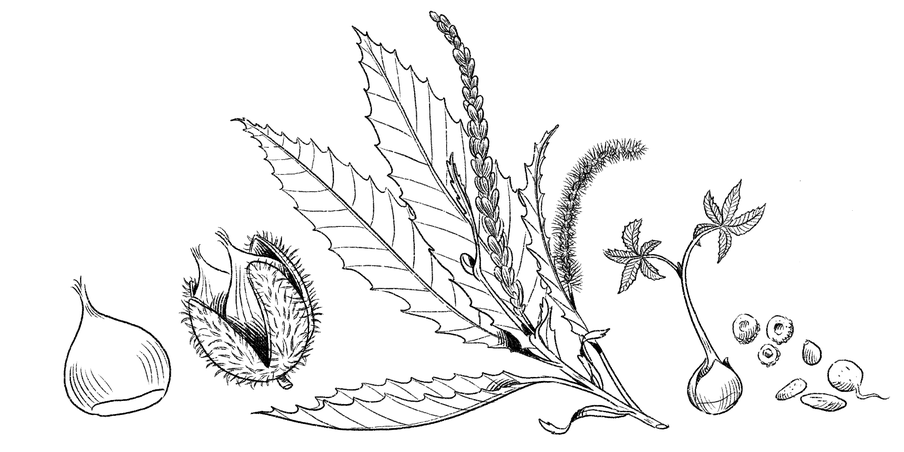
The American chestnut once grew from Maine to Mississippi, an area of more than 200 million acres. A cousin to the familiar European chestnut, it was the most common tree in the eastern North American forest; indeed, some scientists have estimated that one out of four trees in its range was a chestnut. Mature trees could be more than 100 feet tall, with trunks seven feet in diameter that produced strong, straight-grained, rot-resistant wood.
More important, chestnuts were food. Roasted fresh, ground into flour, or dried and reconstituted, chestnut was a staple of the Native American diet for millennia. In effect, the indigenous peoples of this region had two staple crops: one, planted every spring and tended every summer, was maize; the second, planted once and lightly tended for decades thereafter, was chestnut. A Haudenosaunee rule of thumb was that the nuts from a single big chestnut tree could feed a family of four for a year.
In 1904, chestnut blight – a fungus from Asia – was spotted in New York City. As rampant as it was lethal, the disease killed more than three billion chestnut trees in the next half-century. Except for a few scattered survivors, the American chestnut seemed to have vanished from the earth.
The chance to bring back farming with trees
Today, however, several types of blight-resistant hybrid chestnuts are becoming available, spurring efforts to bring the tree back. The goal is more than simply restoring a vanished species: the chestnut in this context represents a chance to bring back farming with trees – agroforestry, as it is called.
Conventional field agriculture focuses on annual row crops – wheat, rice, corn, potatoes – as staples. All of these must be regrown from scratch every year, a process requiring lots of water, often from irrigation; lots of nutrients, usually in the form of high-intensity fertiliser; and, as a rule, lots of tillage. All are costly and can have severe environmental downsides – poisoned soils, toxic runoff, massive erosion, dead zones in lakes and oceans.
By contrast, chestnuts and most other tree crops use less water and fertiliser and cause less erosion than cereals. Chestnuts have shallower root systems than many other trees but nonetheless spread out wider and deeper than row crops. Below ground, the roots help to retain water and soil; they can draw up deep nutrients invisible to annual crops. Above ground, the canopy of leaves reduces the erosive impact of wind and rain.
Most important, as agricultural writers like Tamar Haspel have noted, chestnuts can scale. A typical acre of mature chestnut trees will produce roughly the same number of calories as a typical acre of wheat – in the ballpark of six million calories per acre. Chestnuts have roughly the same nutritional profile as brown rice, and it doesn’t matter if people don’t like the taste: it is just fine for industrial uses, such as animal feed or the production of alcohol or other chemicals.
Europeans have long practiced agroforestry – look at the chestnut orchards in Liguria and Alpes-Maritimes. But European orchards are planted Karacadağ-style, as uniform monocultures. Indeed, many chestnut groves were ripped out when potatoes came to Europe, as farmers replaced one crop with another, which they believed would provide quicker returns.
Indigenous agroforestry is different. Farmers burned large areas, then managed ecological succession across them. “The first nuts to fall are the ones that are never going to ripen,” the Hoopa forest biologist Frank Lake told me. “Then come the ones with insects in them. Right after that is when you burn away all the undergrowth.”
The burning, usually performed late in the afternoon on a wet day, both kills the pests in the fallen nuts and clears away forest litter so that farmers can see the nuts when they fall. “While you’re harvesting you scatter seeds for undergrowth plants you want” – hazel and ferns for fibre, berry plants for dessert, wild potato for starches, and so on. “There’s a seed bank in the soil, but you’re tilting the balance in favour of species that are useful to you.”
Mitigating the risk of forest fires in Europe
The results are two-fold, Lake said. The first is that the frequent agricultural burning drastically reduces the chance of wildfire, a constant danger in the dry summer. (Because it is done in wet weather, the fires are cool enough that most of the carbon released in the fire returns to the ground in the form of smoke and soot.) The second is to convert the entire landscape into a potential zone of production, with no separation between farms and forest. “I’m talking about relatively small groups of people with very simple tools and a lot of local knowledge,” Lake said. “By managing the forest, they transformed a potential danger into a resource, into a source of security.”
In the past, there was no particular reason for rich nations like the Netherlands to think about these practices. But as the world’s people have increasingly moved into cities, they have left ever more empty land behind. One result is the depopulation of the countryside, which has led to rural populist revolts all over the developed world. But another is the creation of increasingly large areas of unmanaged, second-growth forest.
Today, roughly 40% of Europe is covered by trees, making it one of the world’s most forested areas. As the climate grows hotter and drier, those new forests are at risk of dying from drought, which in turn makes them fire-prone. Even as Europeans have been staring with horror at the videos of gigantic fires in the North American West, they have been setting up the conditions for catastrophes of their own. In 2019, fire consumed about 1,300 square miles of European forest – 15% more than the annual average for the past decade. Britain had its worst wildfire year in recorded history.
As the climate grows hotter and drier, Europe’s new forests are at risk of dying from drought, which in turn makes them fire-prone
One reason for the problem is that much of the forest is land that has so little economic value that people have essentially abandoned it. Governments are unwilling to spend the money and lack the workforce to manage these useless but hazardous forests. That could be changed if local people were encouraged to convert them into indigenous-style productive forests. The deal could be sweetened by including the consequences for climate change.
About three-quarters of global greenhouse gas emissions, according to the Intergovernmental Panel on Climate Change, are due to industry, transportation, buildings, electricity and heat production. As the futurist Ramez Naam has put it, we basically know what to do about these emissions: electrify everything, then generate the electricity with carbon-free methods.
The remaining quarter of emissions is due to land use, and the bulk of that is traceable to agriculture. Farm emissions occur mainly because annual row crops die and rot every year and release carbon from the exposed soil when they are alive. Forests, by contrast, sequester carbon in the form of wood and vegetation, storing much of it in the soil. But that advantage vanishes when the forest is consumed by wildfire. Given these circumstances, what is lost by listening to people like Frank Lake?
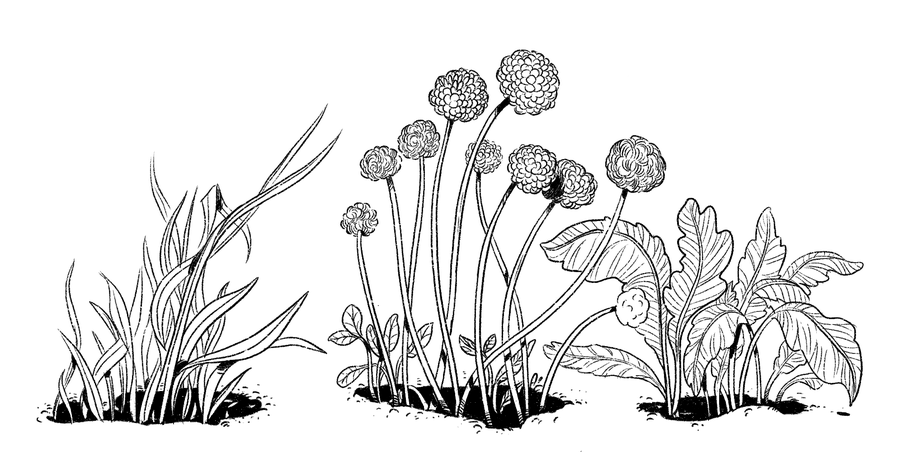
Technically, the name “Sahel” refers to the arid zone between the Sahara Desert and the wet forests of central Africa – a broad east-west band that runs from Mauritania on the Atlantic to Sudan on the Red Sea. Rhetorically, “Sahel” is a watchword for famine and desertification. Until the 1950s the Sahel was thinly settled. Then people from the more crowded areas to its south shifted north, into the empty zone.
Like city slickers moving into the sticks, they didn’t know how to work this dry land. In the 1960s problems were masked by unusually high rainfall. Then came two waves of drought, one in the early 1970s and a second, worse episode in the early 1980s. More than 100,000 men, women, and children died in the ensuing famine – probably many more.
In the Sahelian nation of Burkina Faso, a Mossi farmer named Yacouba Sawadogo confronted the drought. Beginning in the 1980s, Sawadogo hacked thousands of foot-deep holes in his fields– zaï, as they are called – a technique he had heard about from his ancestors. Sawadogo salted each pit with manure, which attracted termites. The insects dug channels in the soil.
When rain came, water trickled through the termite holes into the ground, rather than wash away. In each hole Sawadogo planted trees. “Without trees, no soil,” he said. The trees thrived in the looser, wetter soil in each zaï. Stone by stone, hole by hole, Sawadogo turned 62 acres of waste into the biggest private forest for hundreds of miles.
For his battle against desertification, Sawadogo was awarded the 2018 Right Livelihood Prize, often known as the “alternative Nobel”.
As news of his success spread, his techniques, new but anchored in the indigenous past, spread far and wide. The more people worked the soil, the more trees grew. Higher rainfall was responsible for part of the regrowth (though it never returned to the level of the 1960s). But mostly it was due to the hands of thousands of men and women. Next door in Niger, Hausa and Tuareg farmers used picks and shovels to reforest more than 40,000 square miles, an area almost three times larger than the Netherlands.
Key to their success was the next step: they put cattle on their recovering land. When I visited Niger not long ago, I drove across its southern edge. For mile after mile after I passed farms that consisted of scattered useful trees with cows standing in their shadows. “Without cows, no trees,” Sawadogo had told me. “If there weren’t cows, so much of this land would still be a desert.”
What we need to survive in dry places
His words may come as a surprise. A common response to climate change is to promote eating more plants – to living lower on the food chain. Cattle are often depicted as methane-emitting, deforestation-promoting climate villains: the essence of unsustainable foodways. Pastureland is decried as wasteful, compared to row crops. Sometimes this picture is largely true – it’s hard to see the ranches slashed out of the Amazonian forest as anything but a mistake. But that isn’t always the case.
Humans can only digest specific types of plant matter: soft seeds and tender stems, leaves, and fruit. Cooking can break down the tough stalks, hard roots, and dry leaves of some species, but otherwise everything in the plant is inedible. The problem is magnified in dry areas. As rainfall declines, the plants that can survive dry conditions tend to have tough, thorny stalks and fibrous, waxy leaves made almost entirely of indigestible cellulose.
To live well in dry places, humans have several options. One is that they can replace the natural vegetation with introduced row crops, most of which will have to be irrigated. A second is that they can introduce ruminants.
Ruminants are mammals like cattle, sheep, goats, horses, bison, deer, and camels. They have complicated, three- and four-chamber stomachs that function like fermentation chambers full of microflora that break down long, tough cellulose molecules into the sugars and fatty acids that the animal can use. Our stomachs can’t do that. If we eat cellulose, it just passes through our digestive system. But humans can eat the animals that eat the inedible vegetation.
The consequences of these two choices are unexpected. Most row crops need about 25 litres of water per square meter per week. The average farm-plot size in the Netherlands is about 50 hectares and the growing season is about 30 weeks, which adds up to 375 million litres of water.
Even as climate change made the desert hotter, traditional indigenous combinations of cattle and trees made the land greener
Now fill the same 50 hectares with cattle. In relatively wet places like the Netherlands, a rule of thumb is that farmers can graze about one cow on every hectare – 50 cattle on an average 50-hectare Dutch farm. A typical cow needs about 70 litres of water per day, so 50 of them in a year need about 1.3 million litres of water. That’s a lot of water – but it’s less than 1% of the amount of water needed for row crops on the same land.
In dry areas, cattle can be more sustainable than row crops. Adding trees to the cattle, as the Hausa and Tuareg have, accentuates this comparison. The trees represent a second crop. African locust for seeds and fruit; shea trees for oil and soap; marula for fruit and oil; hanza for roots that can be ground into flour; baobab and atil for edible leaves and fruit – the list of possibilities is endless. Particularly noteworthy, perhaps, is apple-ring acacia, a nitrogen-fixing species that drops its leaves during the dry season, providing animal fodder.
Strikingly, this second crop does not compete with the first (cattle), as row crops would. The busy grinding teeth of cattle clear away the underbrush, reducing the risk of wildfire and beating back competition for the trees. The trees’ deep roots tap water sources that are unavailable to the cattle. The animals’ manure improves the soil. Cattle, trees, and humans are bound together in a feedback loop that benefits all.
One study led by the World Agroforestry Center found that land productivity had increased in the Sahel agroforestry zone by 15% to 50% between 1981 and 2003. Even as climate change made the desert hotter, in other words, traditional indigenous combinations of cattle and trees made the land greener.
Like the Sahel, southern Europe will get hotter and drier. Today, for example, Italy’s main agricultural products are sugar beets, wheat, maize, and tomatoes. All will become increasingly difficult to grow in a warming world. The nation’s farming future may follow a path first laid out by the Hausa, Tuareg, and Mossi.
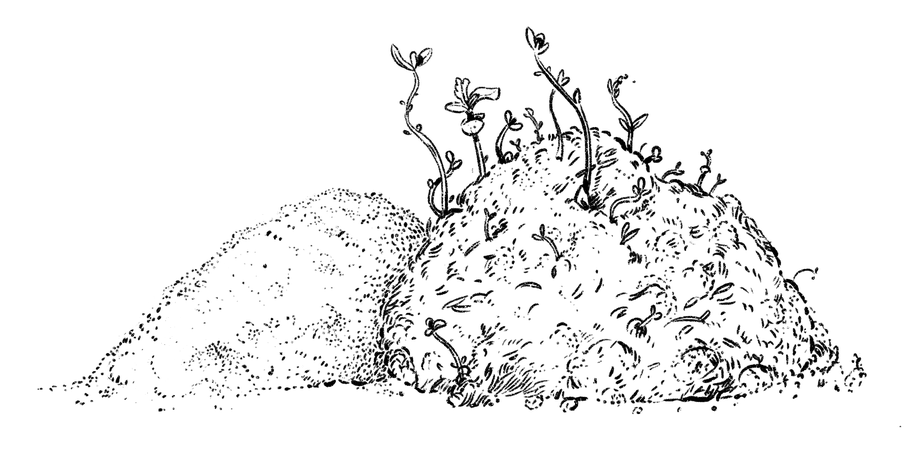
Twenty years ago, I watched Wim Sombroek jump enthusiastically into ankle-deep mud in a pit not far from the banks of the Amazon. Born in Heiloo in 1934, Sombroek was a distinguished soil scientist. All the while, he nourished an obscure scientific passion – the passion that had led him to splash enthusiastically into the Amazonian mud.
The mud was at the bottom of an archaeological trench in the central Amazon, in the far outskirts of the city of Manaus. The trench was deep enough to be over Sombroek’s head – he would need a ladder to climb out. He extracted a dog-eared Munsell soil-colour chart from a pocket and compared it to the walls of the trench, grunting in satisfaction. “This is it,” he said, in my recollection. “And it’s easily two metres deep.”
Beside Sombroek was a wall of earth so deeply gray that it was almost pure black. Existing in miles-long swathes up and down the great river, it is known as Amazonian Dark Earth (or, in Portuguese, terra preta – black earth). Sombroek thought it might help feed the world.
The soil in the Amazon basin is notoriously unfertile. Red and full of aluminium, it hardens after rainfall into something like brick in the region’s harsh sunlight. The lush tropical forest can grow on this poor base because its canopy shelters the soil from sunlight and rapidly recycles its own nutrients. In most cases, these soils are unsuitable for conventional agriculture, because row crops like cereals quickly drain their resources, and the clearing ensures that the ground is exposed to the full effects of rain and sun.
Amazonian Dark Earth is different. Not only is it of a different colour, it contains many more nutrients and percolates water far better than most soils in the river basin. Whereas the hard tropical rain rapidly sluices over these soils, carrying away surface nutrients, Amazonian Dark Earth absorbs both water and nutrients, keeping them available for plants. Some Dark Earth areas around Manaus that I visited had been farmed with row crops for decades without losing their fertility – a remarkable feat in the context of the Amazon.
Most important, it was Sombroek’s belief that these soils had been intentionally constructed by the river’s first inhabitants. They had modified the landscape on a gigantic scale to make it richer and more useful. Their methods were simple. When they cut down the forest to make farm plots, they covered the resultant refuse in dirt, then set fire to it.
Burning in a low-oxygen environment, the refuse turned into charcoal, which they then mixed into the soil. The buried charcoal provided a habitat for useful microorganisms, which in turn increased the level of organic matter in the soil. Slowly, over time, the first inhabitants of the Amazon used the products of deforestation to enrich the forest.
Grinning, Sombroek climbed out of the trench. His boots were covered by a thick layer of Amazonian Dark Earth. I asked if he thought similar indigenous techniques could be used to enrich soils damaged by conventional agriculture.
“Oh, certainly,” he said, as I recall it. “But the larger question is this. We have thousands of cultures around the world who have dealt for thousands of years with difficult agricultural conditions. I’m not a romantic about ancient wisdom or anything like that. But we are acting as though we, alone, have discovered all the answers. And that assumption does not make any sense to me.”
Dig deeper
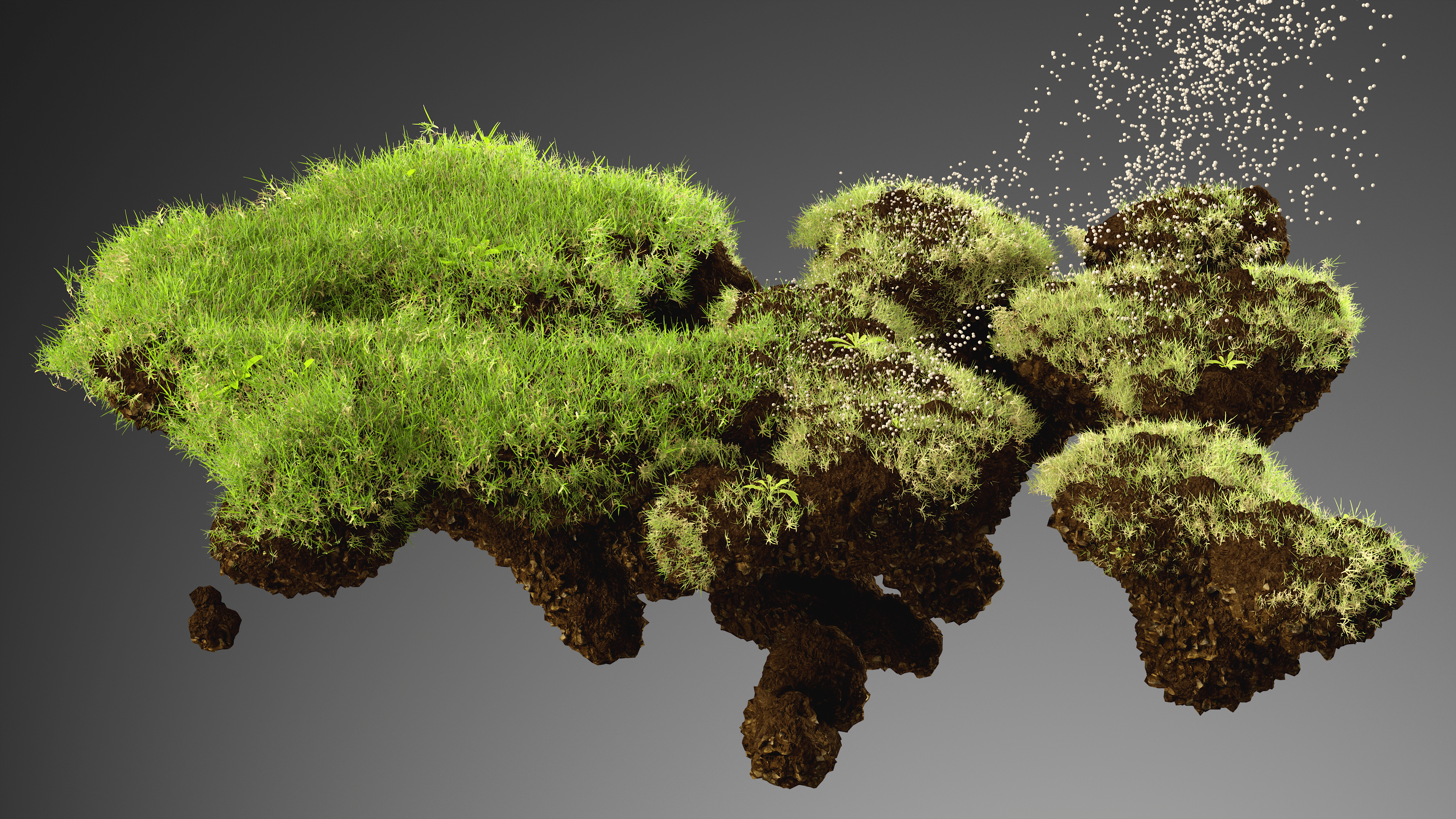 The most important invention of the 20th century keeps us alive but is killing the environment. The solution? Eat less meat
Thanks to an invention in 1909, we now have a world population of almost eight billion people. It keeps half the world’s population alive while wreaking environmental havoc. But we can plant the seeds of positive change by reducing our meat consumption.
The most important invention of the 20th century keeps us alive but is killing the environment. The solution? Eat less meat
Thanks to an invention in 1909, we now have a world population of almost eight billion people. It keeps half the world’s population alive while wreaking environmental havoc. But we can plant the seeds of positive change by reducing our meat consumption.



